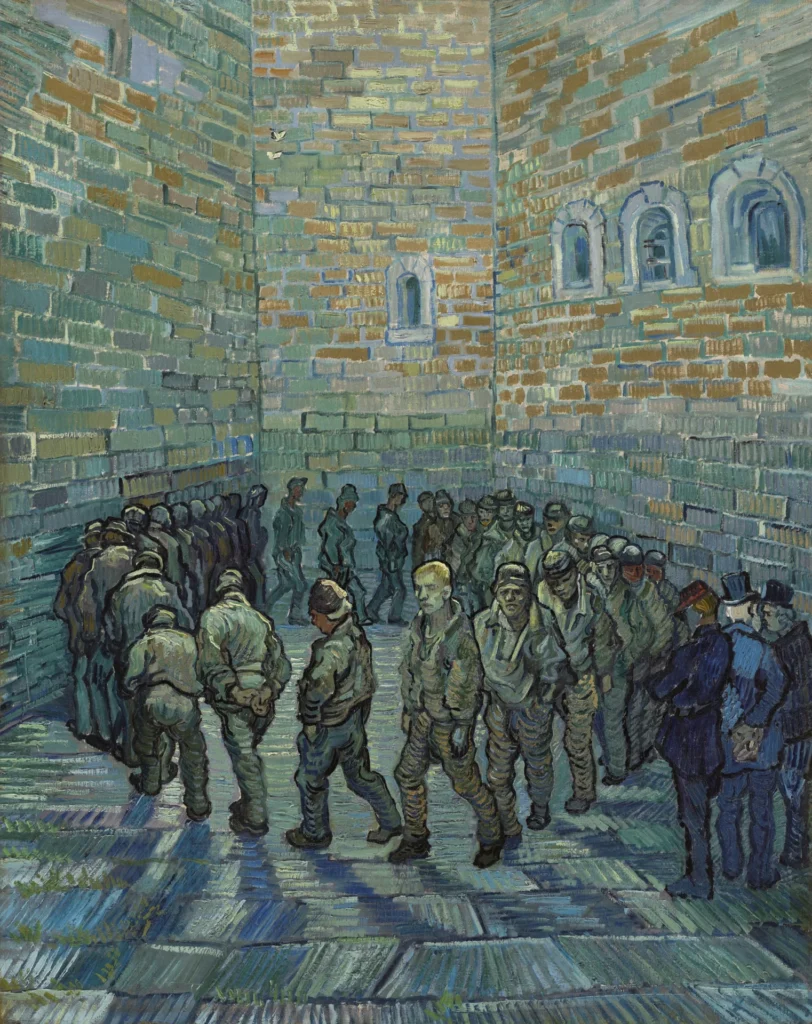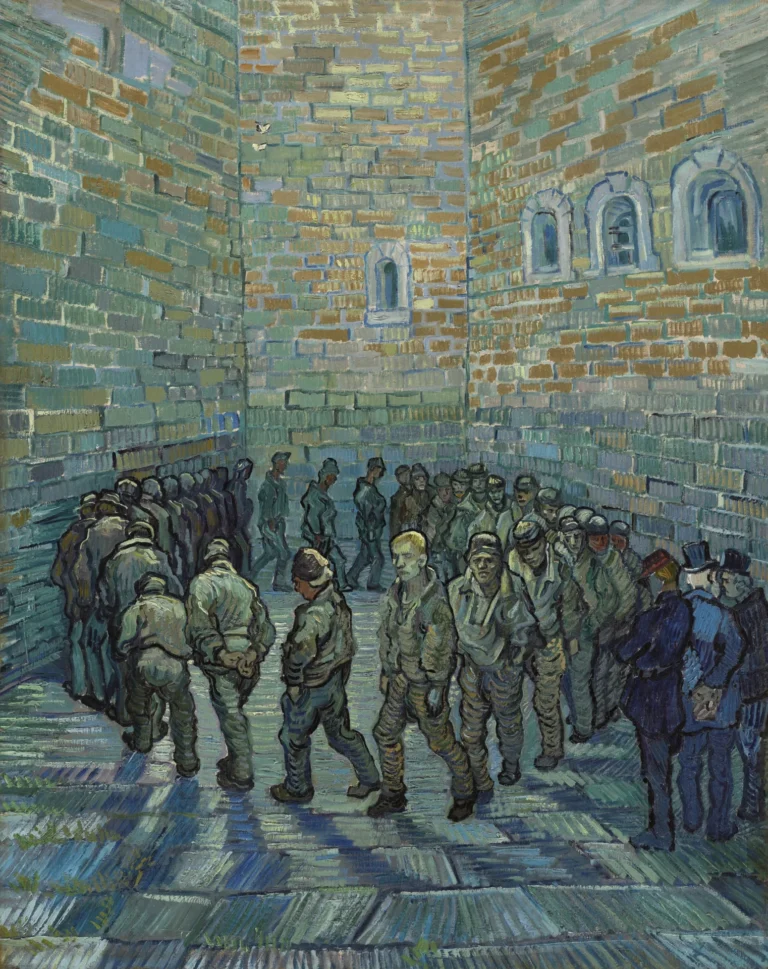Prisoners Exercising (1890)
Created during his stay at the Saint-Paul Asylum, Prisoners Exercising is a powerful portrayal of confinement and emotional turmoil. Based on Gustave Doré's engraving, Van Gogh’s interpretation adds vibrant color to convey his personal experiences of depression and isolation. The bleak composition and circular movement of the prisoners encapsulate a profound commentary on the human condition, showcasing Van Gogh's emotional depth and artistic talent.
February 1890
About the Artwork
Vincent van Gogh painted Prisoners Exercising in February 1890 while undergoing treatment for mental illness at Saint-Paul Asylum in Saint-Rémy. Struggling with severe depression, he found strength in painting, thanks to the encouragement of his brother Theo and the asylum’s director, Dr. Peillon. The artwork's composition, influenced by an 1872 engraving by Gustave Doré, portrays prisoners forced to walk in a confined space, echoing Van Gogh's own sense of entrapment. This emotional piece symbolizes the struggle against mental illness, demonstrating how art served as both therapy and a means to communicate his intense feelings.
Did You Know
The figure in the painting speculated to resemble Van Gogh represents his own struggles, making this work a deeply personal expression of his feelings of entrapment and despair.
Prisoners Exercising influenced a scene in Stanley Kubrick’s controversial film ‘A Clockwork Orange’, highlighting the artwork’s impact beyond the art world.
After passing through various owners, the painting now resides in the Pushkin Museum in Moscow, where it is a treasured piece of Van Gogh’s legacy.










